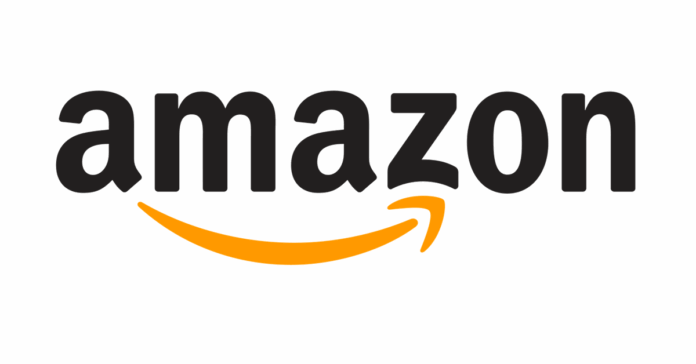SEATTLE, WASHINGTON—For years, the name Amazon.com, Inc. (AMZN) has been synonymous with market dominance and seemingly unstoppable growth. Its stock has been a staple in countless portfolios, a testament to the company’s iron grip on e-commerce, its pioneering role in cloud computing through Amazon Web Services (AWS), and its relentless pursuit of innovation. As of July 31, 2025, the company’s shares closed at a formidable $234.11, pushing its market capitalization beyond a staggering $2.4 trillion. This valuation reflects a deep-seated belief in Amazon’s continued ability to innovate and expand.
Recent Q2 2025 earnings only seemed to reinforce this narrative of success. Net sales climbed an impressive 13% to $167.7 billion, a clear sign of the company’s continued strength in both retail and cloud services. During the earnings call, CEO Andy Jassy highlighted the company’s strategic focus on artificial intelligence (AI), describing its transformative impact on everything from customer experiences to optimizing logistics with advanced robotics like DeepFleet. The numbers were impressive: net product sales reached $68.2 billion, while service sales, driven by AWS and a robust advertising arm, hit $99.5 billion. Operating income surged to $19.2 billion, a significant jump from $14.7 billion in the same period last year, with AWS alone contributing a hefty $10.2 billion—a 10% increase. Net income soared to $18.2 billion, or $1.68 per diluted share, a boost attributed in part to AI integrations like Nova and Bedrock. Even the annual Prime Day event broke records, with billions saved by customers and peak sales for independent sellers, underscoring the formidable strength of Amazon’s ecosystem.
Yet, for the astute investor, these seemingly robust figures may be more of a mirage than a foundation. The 13% sales growth, while solid, represents a deceleration from prior quarters, a trend that suggests the company isn’t immune to broader economic headwinds. Even more concerning is the sheer scale of Amazon’s capital expenditures (CapEx) on AI and other infrastructure. Projected at a massive $112 billion for 2025 alone, this spending has severely eroded the company’s free cash flow (FCF), a crucial measure of financial health. For the trailing twelve months (TTM), FCF yielded a paltry 0.75%, a figure that would make most value investors blanch. Analysts from institutions like UBS have also begun to sound the alarm, noting that while AWS’s 17.5% growth is commendable, it may not be enough to justify the stock’s premium valuation in an increasingly competitive and maturing cloud market.
Beneath the polished surface of the earnings report lies a compelling case for extreme caution. A deep dive into fundamental valuation metrics reveals a stark discrepancy between Amazon’s market price and its true worth.
A Stark Discrepancy: The Overvaluation Paradox
The core of the issue lies in Amazon’s valuation. While its market capitalization has ballooned to over $2.4 trillion, a comprehensive analysis using established valuation models—including a Buffett-Inspired approach and the McGrew Growth method—paints a far more sobering picture. These models, which focus on a company’s ability to generate cash flow, peg Amazon’s intrinsic value at a mere $26.72 per share. Applying a traditional 40% margin of safety, a crucial buffer against unforeseen risks, drops this figure even further to $16.03 per share. This staggering discrepancy suggests that the stock is overvalued by nearly 775%, trading at a premium that could expose new investors to significant downside risk. The takeaway is clear: the current price is driven by market sentiment and growth expectations that may not be supported by the company’s underlying financial reality.
This overvaluation isn’t just a quirk of one or two models; it’s a theme echoed across a range of broader metrics. Amazon’s price-to-sales (P/S) ratio, a measure of how much investors are paying for each dollar of sales, stands at 3.81 TTM. This is significantly elevated compared to traditional retail peers like Walmart, which trades at a P/S of just 0.8. While a comparison to a high-margin tech company like Microsoft (P/S of 13) might seem more fitting, Amazon’s profit margins are nowhere near that level, making the comparison tenuous at best. The company’s enterprise value-to-EBITDA ratio, another key metric, is 18.39, signaling that the market is willing to pay a high price for a company whose growth, while still strong, is demonstrably slowing. While revenue growth has been solid (11.13% TTM and a 13.30% five-year CAGR), it has decelerated from the frenzied highs of the pandemic era. Similarly, earnings growth (10.89% TTM) is lagging behind the stock’s performance, a classic red flag for overvaluation.
The massive capital intensity of Amazon’s operations further erodes its appeal. In the TTM, CapEx consumed an astonishing 565% of the company’s FCF. This massive outlay, driven by investments in data centers, AI research, and an ever-expanding logistics network, is a testament to Amazon’s commitment to growth but also a significant drain on its financial resources. CEO Andy Jassy himself noted that CapEx for 2025 is projected at $105 billion, a figure that was later revised upward by analysts to a jaw-dropping $112 billion. This spending leaves a paltry FCF yield of just 0.75%, far below the 4-5% threshold that many investors consider a reasonable starting point for an attractive investment. As analysts at UBS noted in July 2025, this rising AI-related spending could pressure margins, putting a squeeze on profitability.
While Amazon’s debt metrics remain stable—with a debt-to-equity ratio of 0.44 TTM and strong interest coverage of 34.58—the debt-adjusted ROE (DAROE) at 13.89% TTM reveals that the company’s earnings quality, while good, is not exceptional enough to justify its sky-high valuation. Even Morningstar’s July 2025 analysis, which rates Amazon as fairly valued at around $240, comes with a significant warning: the company is highly vulnerable to tariff risks and broader economic slowdowns that could impact consumer spending.
Cracks in the Armor: Qualitative Risks to Amazon’s Moat
For years, Amazon’s competitive advantages—its formidable “moat”—have been considered virtually impenetrable. This moat is built on several pillars: the unparalleled brand loyalty of its over 200 million Prime subscribers, the powerful network effects of its marketplace, the high switching costs associated with AWS, and the immense cost advantages that come with its scale. However, even the most formidable moats can develop cracks, and Amazon’s is no exception.
The e-commerce industry, while resilient, is not immune to cyclical pressures. A potential recession or sustained period of high inflation could cause consumer demand to soften, directly impacting Amazon’s retail sales. Meanwhile, AWS, which holds a dominant 31% share of the global cloud market, faces increasingly fierce competition from tech giants like Microsoft Azure and Google Cloud. Both rivals are aggressively investing in and accelerating their own AI capabilities, directly challenging Amazon in what has long been its most profitable and fastest-growing segment.
The high capital requirements for Amazon’s growth—the endless cycle of building new warehouses, integrating cutting-edge robotics like Vulcan, and expanding AI infrastructure—place a significant strain on its ability to generate FCF for shareholders. While the company’s asset turnover is high at 1.01 TTM, the returns on sustained investments, such as its fleet of over 700,000 robots, could be strained if the current hype surrounding AI cools. Analyses from Morningstar and Seeking Alpha in July 2025 have explicitly pointed to the risk of overvaluation if AWS growth, which was 17.5% in Q2, slows below the 20% mark, especially as CapEx continues to balloon.
The competitive landscape is also intensifying. Traditional rivals like Walmart are successfully leveraging their hybrid online and physical store model to chip away at Amazon’s retail dominance. In international markets, Alibaba remains a force in Asia, while new and aggressive players like Temu are challenging Amazon on price, forcing the company to rethink its strategy. Even CEO Andy Jassy’s forward guidance for Q3 2025—predicting sales growth of 10-13% and operating income of $15.5-20.5 billion—is positive but, as experts on Yahoo Finance noted, it assumes no major market disruptions, a risky assumption in a volatile global economy.
A World of Alternatives: Redirecting Capital for Superior Returns
In the overheated market of 2025, where tech and AI valuations are stretched to their limits, the prudent investor might find more attractive opportunities by looking elsewhere. A July 2025 report from J.P. Morgan on alternative investments highlights several promising themes. For instance, the ongoing U.S. housing shortage presents opportunities in real estate investment trusts (REITs) like Prologis and American Tower. Similarly, the growing demand for AI-driven energy solutions offers compelling prospects in the renewables sector through companies like NextEra Energy. Private credit is also emerging as an attractive option as interest rates normalize.
For those who want to remain in the stock market, there are still compelling alternatives. While Amazon’s stock is trading at a high premium, other tech companies offer similar exposure to the AI theme but with more robust growth trajectories. Nvidia (NVDA) and Advanced Micro Devices (AMD), for example, are at the forefront of the AI revolution and have delivered staggering returns over the past decade. A quick look at Fool.com reveals that Nvidia’s 27,250% 10-year return completely dwarfs Amazon’s. For investors seeking diversification and a safer, value-oriented approach, Berkshire Hathaway presents an enduring option. It’s also telling that even Amazon founder Jeff Bezos, according to reports from Finance Yahoo in 2025, has diversified his personal investments into companies like Rivian (EVs), Airbnb (travel tech), and biotech firm Altos Labs, suggesting that even he sees the value in looking beyond his own creation.
Discussions on platforms like Reddit’s r/ValueInvesting thread in early 2025 have debated Amazon’s merits, with a general consensus emerging that the company is “great but pricey,” concluding that better bets can be found in undervalued sectors like energy or healthcare. A Forbes piece from April 2025 highlighted Amazon’s 24% year-to-date drop at the time, attributing it to growing concerns about tariffs and massive CapEx, and urged a shift toward more resilient assets.
Conclusion: It’s Time to Look Beyond the Giant
Amazon remains a global powerhouse, an innovator, and a dominant force in both e-commerce and cloud computing. Its strategic investments in AI, from Nova to Bedrock, position it for a future that will undoubtedly be driven by this technology. However, the company’s current stock price of $234.11 is trading at a premium that simply cannot be justified by its underlying fundamentals.
With valuation models and analysts alike suggesting the stock is significantly overvalued, and with the company facing high capital expenditures, intensifying competitive pressures, and broader economic uncertainties, the risk-reward ratio for new investors is decidedly negative. For those seeking to preserve capital and find superior returns, a better path forward may be to reallocate funds to more undervalued AI plays, strategic REITs, or broadly diversified funds. As always, consulting with a financial advisor is crucial, but in the volatile market of 2025, a critical look at the market’s giants is necessary. It may be time to look beyond the name on the ticker and find your next investment elsewhere.

